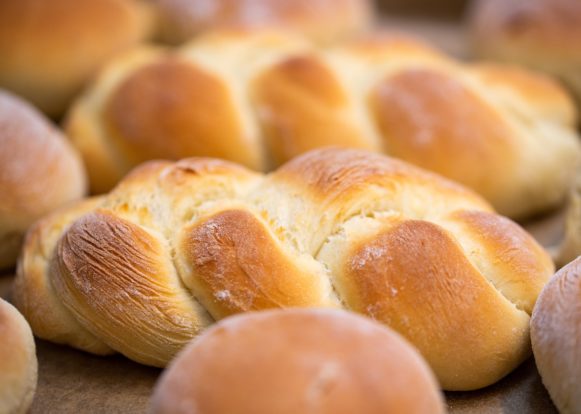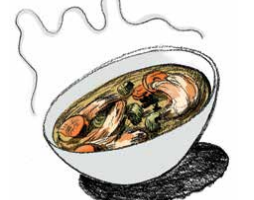Lilith Feature
The Foremothers of Food Memoirs
The book is a familiar, but appealing, fish-out-of-water story. Reichl, who once lived on a California commune, learns how to run a magazine while adjusting to the lavish lifestyle expected of Conde Nast editors. Like her other memoirs, Save Me the Plums is also about family—in this case, the Gourmet staff and Reichl’s Conde Nast colleagues. And, like all of Reichl’s work, it’s accessible, wry, and affectionate.
Reichl has acknowledged Sheraton and Colwin. Of Sheraton, her predecessor at the Times, Reichl says, “She was tough, fearless and forthright. …The longer I had the job, the more I respected her. She was so unpretentious and so unafraid of offending anyone.”
The Jewish Themes
Even before the spate of recent food memoirs, a most poignant antecedent was created in the early 1940s and published in 1996: In Memory’s Kitchen: A Legacy from the Women of Terezin, edited by Cara De Silva and translated by Bianca Steiner Brown. Lore Dickstein’s New York Times review of this extraordinary “fragile, handwritten book of recipes, the pages sewn together by hand” bore the headline “Hell’s Own Cookbook.” This remarkable book is both a recollection of happier times and far better meals than the moldy bread the prisoners were fed in the “model” concentration camp, and also offers testimony to the terrible existence these Czech women knew during the Holocaust. This is a food memoir that calls upon the reader to remember as well.
So many writers of recent food memoirs are Jewish; even a casual search turns up a list of about 30. And some, like Lynn Shapiro’s Food, Family and Tradition: Hungarian Kosher Family Recipes and Remembrances, contain explicitly kosher recipes. Jewish women have also penned fictional versions of the genre: Nora Ephron’s 1983 novel Heartburn is peppered with recipes from her cookbook-writer heroine. So: Are Jewish women especially drawn to the melding of family experiences and cooking?
In This Feature
Elizabeth Michaelson Monaghan
From M.D. to Baker, Beth Ricanati’s Memoir of ChallahCalifornia-based physician Beth Ricanati is the author of Braided: A Journey of a Thousand Challahs (She Writes Press, 2018), a chronicle of her decade of weekly challah baking and its spiritual benefits. Elizabeth Michaelson asks her some questions.





